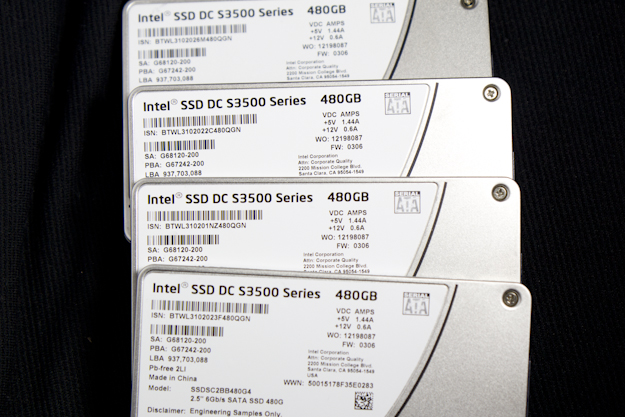REPORT ANALYSIS AND CONCLUSION
With the release of the Intel SSD DC S3500, Intel is entering a sector that was once dominated by consumer drives masquerading as enterprise drives. These read intensive environments don’t need high priced, high endurance NAND. They need to be read optimized, but they also can’t falter when a few writes are thrown their way.
If you were making a checklist for an entry-level, read-oriented SSD, the S3500 would have every box checked. To have so many enterprise features in an SSD that retails for ~$1.20/GB is impressive.
But, overall, how did the S3500 stand up to the SM843? Lets just say it held it’s own. Now, we can only compare the drives we receive for review. With that said, the two drives were evenly matched, with no one drive separating itself too much. The S3500 did a great job of handling high read/low write workloads, which is a very common enterprise application. We were a little disappointed by the latency distribution, but the results weren’t terrible.
When we start to look at capacities that we didn’t test, the S3500 doesn’t look quite as good. The write performance on the S3500 goes downhill rapidly as the capacity decreases, while the SM843 stays pretty consistent across capacities. On the other hand, the S3500 offers so many capacity points, it covers many more options than the SM843.
In this battle of enterprise drives, there are no losers, but there is no clear winner. Each drive has its positives and its negatives. If we were forced to choose, we would probably go with the S3500 simply because it has more enterprise features that the SM843 can’t match, as well as a transparent and very low pricing scheme. For this, we have awarded the Intel SSD DC S3500 with our Top Value Award.
 The SSD Review The Worlds Dedicated SSD Education and Review Resource |
The SSD Review The Worlds Dedicated SSD Education and Review Resource | 


Two things concern me with this SSD. The power protection caps look rather outdated compared to other enterprise SSDs. Secondly, the SSD label indicates a +12V line is required along with the usual +5V. My OCZ SSDs only required +5V . What’s the +12V being used for?
dravo1 – The S3500/S3700s can operate on both the 5 and 12V rail. 12V is useful in enterprise rack systems where it may be more readily available than 5V. All of our testing was performed in systems using only 5V, so don’t worry too much.
what about the SM843 with tantalum caps? or the SM843T with super caps and e-mlc?
We can’t say much about products that are not released, but if the 843 had power loss caps, it would be much more attractive to enterprise. If they add a high endurance option, that would put it in a difference price/performance class, so it’s hard to tell how it would stack up,
they are just sold through oem like samsung was before their consumer SSD. Used to be microcenter was the only place to get samsung hard drives. SM843T is the same as the 840 pro as far as they are concerned the factory OP is higher. the 840 Pro only worked after we moved to 30% OP with some megascu love to the LSI 9266
The write endurance seems to be pretty low though! 450000GB/800GB = 562 cycles. Others do something like 2-3000!
You need to the into account the WA aswell, especially becouse it uses no compression, it will always be more than 1.
Yes, with the JESD standard, the write amplification is 5-7X, from my experience. If you are looking at a workload where WA=~1, you are looking at slightly over 3000 PE cycles.
Does it work with macbook pro early 2011, core i7, 500gb? looking to upgrade to SSD.
Of course it will.